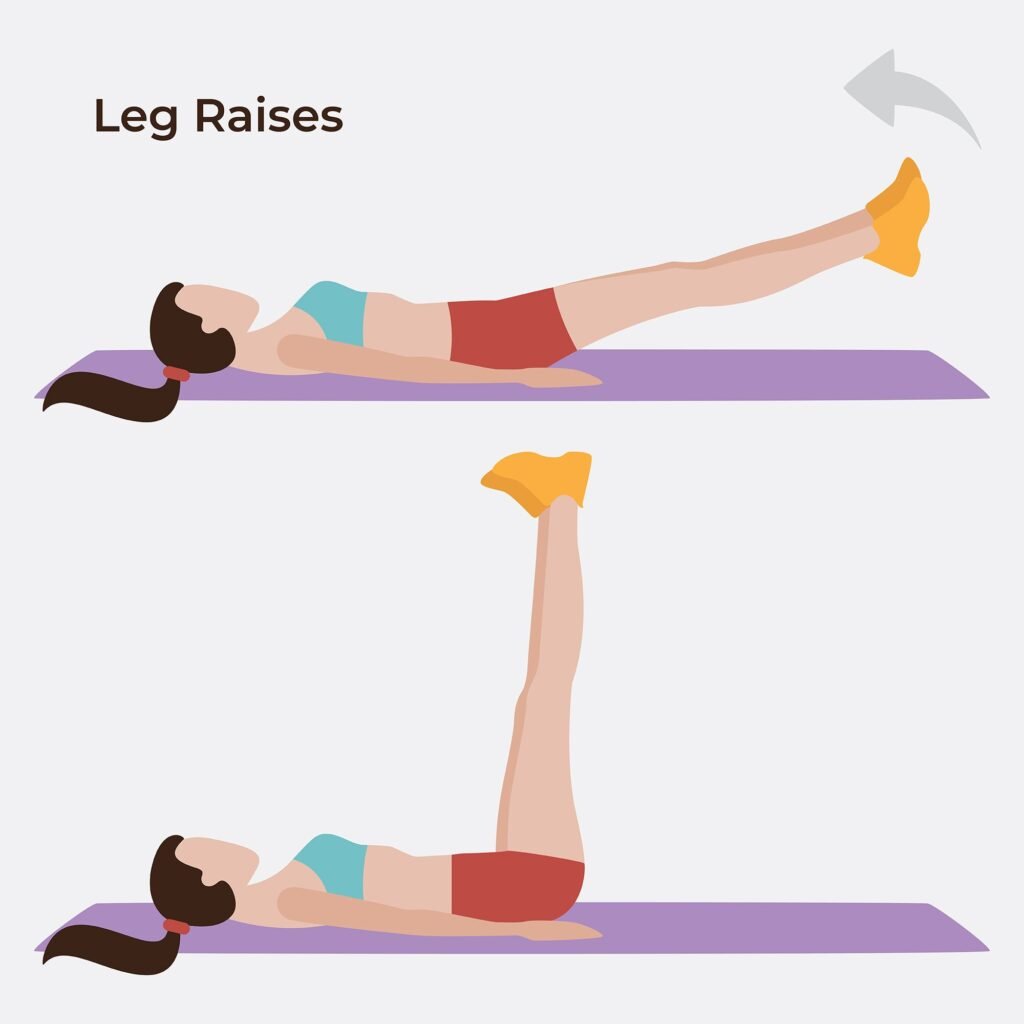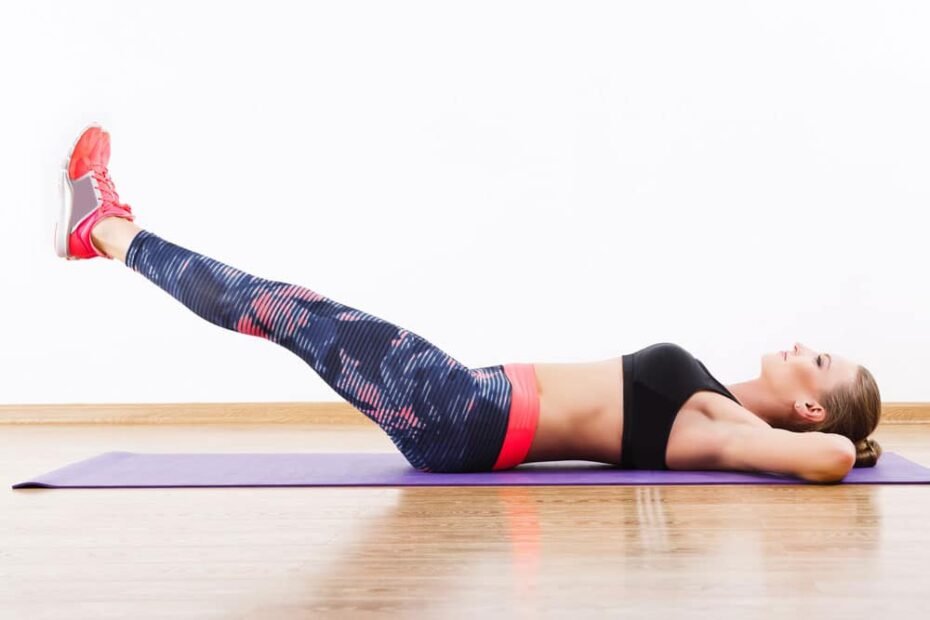Leg raises are a fundamental core exercise that primarily targets your lower abdominals while engaging various other muscle groups. In this comprehensive guide, we’ll explore how to perform leg raises correctly, the muscles worked, the benefits they offer, common mistakes to avoid, and variations & alternatives to enhance your core training.
Muscles Worked
Primary Muscles Targeted:
- Lower Rectus Abdominis (Lower portion of the front of your abdomen)
Secondary Muscles Engaged:
- Hip Flexors (Iliopsoas)
- Transverse Abdominis (Deep core stabilizing muscles)
How to Do Leg Raises
Follow these steps to perform leg raises correctly:

- Starting Position: Lie flat on your back on an exercise mat or the floor. Place your arms by your sides, palms facing down for support.
- Leg Position: Extend your legs fully, keeping them close together.
- Lift Your Legs: Keeping your legs straight, engage your core muscles and lift your legs off the ground. Raise them as high as you comfortably can while maintaining control.
- Upward Motion: Slowly lift your legs while exhaling. Keep your feet together and maintain a slight bend in your knees if needed to prevent strain on your lower back.
- Top Position: At the top of the movement, your legs should be perpendicular to the floor. Pause briefly, engaging your core to stabilize your body.
- Lower Your Legs: Inhale and slowly lower your legs back down, maintaining control. Avoid letting your feet touch the floor between repetitions to keep constant tension on your core.
- Repetition: Perform the movement for a specific number of repetitions or a set duration.
Benefits of Leg Raises
Leg raises offer several benefits for your core and overall fitness:
- Lower Abdominal Focus: This exercise places particular emphasis on the lower rectus abdominis, helping you tone and strengthen the lower portion of your abdominal muscles.
- Core Stability: Engaging your core for balance and control during leg raises promotes better core stability, reducing the risk of back pain and enhancing posture.
- Hip Flexor Strength: The hip flexors, specifically the iliopsoas muscles, are engaged during leg raises, contributing to better hip flexibility and strength.
- Functional Strength: A strong core contributes to better performance in daily activities and sports.
- Lower Back Support: Strengthening your lower abdominals can provide support to your lower back and may help alleviate lower back pain.
Common Mistakes to Avoid
To maximize the effectiveness of leg raises and minimize the risk of injury, steer clear of these common mistakes:
- Using Momentum: Perform the exercise in a controlled manner, avoiding swinging or jerky movements.
- Overarching Your Back: Maintain a slight natural arch in your lower back rather than pressing it into the floor. Avoid arching your back excessively.
- Lifting Too High: Raise your legs to a height where you can maintain control and avoid straining your lower back. Going too high can lead to lower back discomfort.
- Holding Your Breath: Breathe steadily throughout the exercise to prevent muscle tension and fatigue.
Variations & Alternatives
Variations:
- Hanging Leg Raises: Perform the exercise hanging from a pull-up bar or similar equipment, which adds additional core engagement and challenges your grip strength.
- Bent-Knee Leg Raises: Bend your knees at a 90-degree angle during the movement to reduce the load on your lower back and make the exercise more accessible for beginners.
- Side Leg Raises: Lie on your side and lift your straightened legs, targeting your oblique muscles.
Alternative Core Exercises:
- Plank: Engage your entire core by holding a plank position on your elbows and toes.
- Russian Twists: Improve rotational strength and work your obliques with this seated twisting exercise.
- Bicycle Crunches: Target your rectus abdominis and obliques with this dynamic core exercise.
- Side Planks: Engage your oblique muscles and improve core stability from a side-lying position.
Incorporate leg raises and other core exercises into your fitness routine to develop a strong and stable core, support your overall fitness goals, and enjoy the benefits of a well-conditioned midsection.
